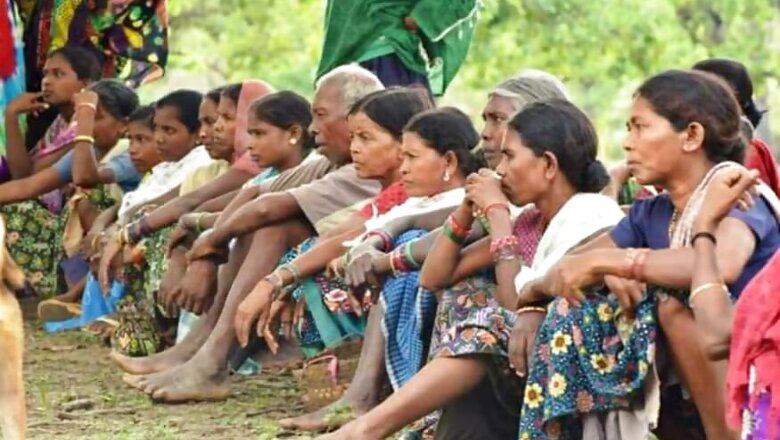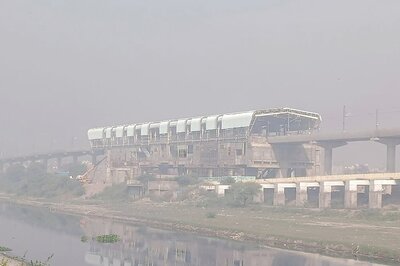
views
With the hindsight of over one and a half months of lockdown, if there’s one thing everyone can agree on, it is that stringent social distancing measures have affected lives throughout the country unequally. Those among the high-income groups living in urban spaces are relatively better off than the rest. And the tribals living in remote, forest areas are among the worst hit.
According to a recent study compiled by a group of concerned citizens, the lockdown coincides exactly with the period when minor forest produce (MFP)— comprising non-timber items like bamboo and other grasses, seeds, fruits, flowers, plants, edible and useful roots, etc—is collected, which is the source of food, shelter, medicines and cash income for an estimated 100 million forest dwellers across the country.
Then there are the particularly vulnerable tribal groups (PVTGs) which are not being able to access healthcare that is critical to their survival because of social distancing norms.
News18 spoke to CR Bijoy, a forest rights activist who has spent close to 40 years researching and writing about natural resource conflicts and governance issues, on the impact the lockdown has had on the indigenous people and their livelihoods.
How is the lockdown affecting the tribal population living in remote areas?
Tribals living in remote areas are being told that they can’t go out of their villages. Unlike urban areas where you are likely to have access to various resources, in tribal, hilly regions there is absolutely nothing. About 10 to 15 villages may have a common ration shop. Tribals living in such places have to necessarily go to urban or semi-urban areas to get access to provisions and services.
In terms of income, as a tribal either you’re working as, say, a worker at a tea estate or you make money by selling forest produce. All that has been shut now for some time. So these restrictions have put them in a very tough spot. Forest department officials are not allowing them to go to forests even to dig out tubers to feed themselves. It’s not as if, all of a sudden, our forests have potentially dangerous and explosive Covid-19 hotspots, is it?
Even the public distribution system (PDS) is not really reaching these areas?
In a tribal area you don’t really expect officials to deliver foodgrains to your doorstep. The message is you go and collect the food. But how can they go in time of social restrictions? It is a major problem. This concrete reality has to be addressed. The government needs to set up a response team which can monitor these problems in real-time. It’s not impossible. You already have officials and data till the taluka level. Mechanism of communication can be arranged and strict monitoring can be done.
I fear that a large section of people are looking at the food distribution systems in urban areas and extrapolating the scenarios from there.
Including decision makers in the government?
People in the government are not even thinking. We have a system in which people in the higher rungs don’t seek the advice or feedback from people on the ground. It’s a top-down approach. There is a fundamental disadvantage that people in tribal areas have to contend with. If people in urban areas are dissatisfied with some government service, they can immediately exert pressure through various means. When you go to tribal areas, that ability to influence first-level government workers is not there and it makes them less visible, more vulnerable.
How would you advise the central and state governments to help tribals during this time?
Had the Forest Rights Act of 2006 been implemented, it would have been tremendously helpful at such a time. It envisaged the transfer of governance from the forest department to the villages. Had the people been given the power to manage themselves, they would have emerged from this crisis much more strongly. It has a proven successful track record.
In 2002, Nagaland passed a law called the Communitisation Act. Three major departments were transferred to the people under this Act – public education up to middle school, primary health service and electricity. Within a record time the quality of education and health improved so drastically that they received awards from UNESCO and WHO for it. So, it’s a sure-fire way of helping people – by allowing them to help themselves. Had this been done it would not only have been in the spirit of the Constitution which talks about village self-rule, it would have empowered tribals to impose necessary precautions while ensuring that their livelihoods are not greatly impacted.
But working on the assumption that livelihoods of many tribals have already been severely impacted, do you foresee a huge wave of tribal migration in urban areas in the near future, as regulations are eased and industries are allowed to reopen?
You can expect this disruption to take place till the end of the year, assuming there's no second wave. Till then the market demand for their forest produce is going to crash. So, yes, they are going to be forced to look for alternative livelihood options. But would it result in an increase of migration of people to urban areas?
My own hunch is that it would not. For the simple reason that migrants themselves are getting back to their villages right now. For the next few months, there’s going be a limited number of people being allowed to work. Industry demand is going to be low. I do think, though, that this is a great opportunity to create self-sustaining and long- term livelihood options for tribals near their habitats, so that they can work near their homes and pressure on cities is reduced.
Finally, a lot of tribals living in remote areas, the PVTGs especially, are quite vulnerable right now. What options do they have?
The solutions are very limited. There are two types of health resources in a tribal area. The first is their herbal medicine, that sort of natural healing, which is a system that over the years has almost collapsed. The second is access to modern medicine through healthcare systems. Since the tribals are susceptible to various illnesses like tuberculosis and malaria, it is essential for them to have uninterrupted access to these centres. This is not happening right now, also because the health centres themselves are under great stress.
The only option I can see is that these groups be given simple training in primary healthcare. The government should transfer knowledge, financial resources and create enough volunteers so that these groups can take care of their basic health requirements.


















Comments
0 comment